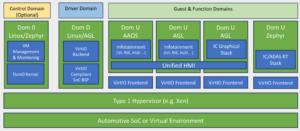Samsung’s IoT platform SmartThings now supports edge computing to improve home automation.
Edge computing enables more core functionality to be processed locally. For the end-user, that means tasks are executed faster, more reliably, and with greater security.
In a blog post, the SmartThings team wrote:
“While users will not see a change within the SmartThings app, on the backend, SmartThings Edge is transforming connectivity and the experience in a noticeable way.
SmartThings Edge’s advanced technology increases the speed of automations for consumers by eliminating the need for cloud-based processing, bringing all the information directly to the Hub.
This not only streamlines events and commands, but also allows for local device support on a home network, allowing users to run their Automations locally.”
SmartThings differs from many proprietary hubs in that it supports a wide variety of standards including Zigbee, Z-Wave, and LAN-based integrations. SmartThings will also support the Matter protocol in the future.
The new edge functionality requires a SmartThings Hub 2.0 or 3.0, or newer hubs sold by Aeotec. While previous generations of the SmartThings Hub required a wired ethernet connection, v3.0 supports wireless.
Samsung continues to improve SmartThings and has made several notable announcements in recent months. This includes SmartThings Find and SmartThings Energy, both of which are for the people who are fully-immersed in Samsung’s wider ecosystem:
SmartThings Find helps to find Galaxy devices like Buds and Watch.SmartThings Energy allows you to monitor, track, and manage energy usage of Samsung home appliances and air conditioners.
As part of a bid to modernise its core components, Samsung is gradually moving away from the legacy Groovy platform. Developers can now code and build device drivers with Lua, offering a more robust and simpler way for device manufacturers to integrate with SmartThings.
(Image Credit: SmartThings)
Want to find out more from executives and thought leaders in this space? Find out more about the Digital Twin World event, taking place on 8-9 September 2021, which will explore augmenting business outcomes in more depth and the industries that will benefit.
Tags: edge computing, featured, IoT, matter, platform, protocol, samsung, smartthings, SmartThings Edge, z-wave, zigbee



